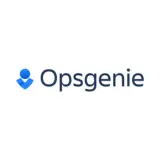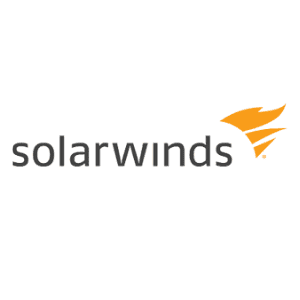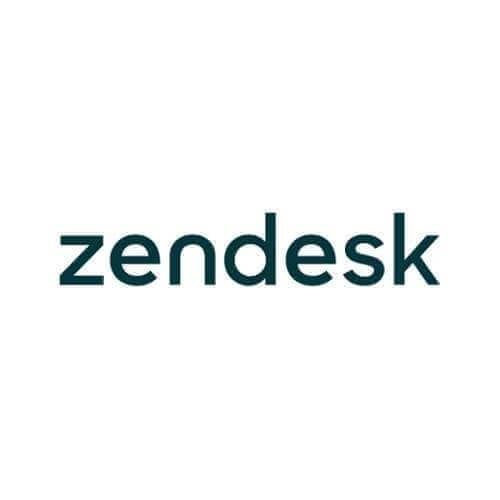Why use SafetyCulture?
SafetyCulture is one of the most comprehensive incident report software solutions available. This multi-purpose platform helps streamline reporting and managing incidents in various industries, ensuring businesses can effectively address safety concerns and maintain a secure working environment. It has a user-friendly interface that is intuitive and easy to navigate, allowing users to quickly create and submit incident reports. It’s vital in high-pressure situations where time is of the essence, as it enables users to document incidents accurately and efficiently.
Features:
- Report incidents using mobile-compatible pre-made incident report templates from the Public Library
- Capture photos and videos with digital signatures for accurate documentation
- Assign action items and monitor issues in real time until the completion
- Communicate using Heads Up to alert team members of any potential safety issues
- Conduct bite-sized training to educate team members on incident reporting
Why use ProProfs Help Desk?
ProProfs Help Desk improves support by allowing staff and customers to report incidents through various channels. These include email, live chat, web forms, and the help center. The software automatically assigns tickets to the appropriate agents for immediate action. It also enables team collaboration through private notes and assigning incidents to relevant teams. Additionally, canned responses are available for quick replies.
Features:
- Split complex tickets into child tickets and assign them to different departments
- Keep agents and end users informed with automated email alerts
- Add Labels to incidents to better organize them or arrange them by priority
- Utilize CSAT and NPS surveys to monitor the end-user experience
- Free Version: None
- Pricing: Starts at $20/user/month (billed annually, with a 15-day free trial)
- Platforms supported: Web, Android, and iOS
Why use PagerDuty?
PagerDuty helps you resolve critical incidents faster and prevent them from happening again. You can keep key stakeholders informed about major incidents in real time. It also empowers different departments to collaborate and respond proactively. Users can create a timeline of activities and investigate to understand the root cause. It fosters a business culture of continuous progress and improvement.
Features:
- Gain a holistic overview of machine data, teams, and services
- Analyze major and minor incidents with postmortem reports
- Integrate with leading ITSM and ticketing systems
- Communicate with team members using Slack and Microsoft Teams
- Free Version: Yes, up to 5 users
- Pricing: Starts at $21/user/month (billed annually, with a 14-day free trial)
- Platforms supported: Web, Android, and iOS
Why use Opsgenie?
Opsgenie provides a complete view of incidents and their impact on business services. This tool allows users to send alerts, create status pages, and identify potential causes quickly. Furthermore, it helps connect alerts with affected business services, enabling comprehension of which teams need to take action and who needs updates while resolving incidents.
Features:
- Utilize multiple notification channels to keep your team, and members informed
- Connect with ChatOps, ITSM, and collaboration tools
- Create flexible on-call schedules with daily, weekly, or custom rotations
- Utilize the investigation dashboard to investigate deployment-related incidents
- Free Version: Yes, up to 5 users
- Pricing: Starts at $9/user/month (billed annually, with a 14-day free trial)
- Platforms supported: Web, Android, and iOS
Why use Freshservice?
Freshservice offers various channels for end-users to contact support, such as live chat, email, self-service knowledge base, mobile app, chatbot, feedback widgets, or walk-ups. A ticket prioritization system will ensure that critical incidents don’t go unnoticed. At the same time, the reporting dashboard provides ticket visibility and allows users to track their progress.
Features:
- Publish a knowledge base with solutions to common problems and incidents
- Share reports periodically with multiple stakeholders
- Send a satisfaction survey to the staff member
- Prioritize incident tickets based on their potential impact on the company
- Free Version: None
- Pricing: Starter plan starts at $19/user/month (billed annually, with a 21-day free trial)
- Platforms supported: Web, Android, and iOS
Why use ManageEngine ServiceDesk Plus?
ManageEngine ServiceDesk Plus can track incidents and helps businesses avoid downtime. Users can report tickets through email, phone, or a self-service portal. Ticket routing can be automated to assign to the appropriate technician or agent.
Features:
- Track and manage all incidents throughout their lifecycle
- Implement a Service Level Agreement (SLA) to enhance end-user satisfaction
- Keep end users informed via automated email notifications
- Monitor end-user satisfaction by sending surveys at predefined intervals
- Free Version: None
- Pricing: Standard plan starts at $10/user/month (billed annually, with a 30-day free trial)
- Platforms supported: Web, Desktop, Android, and iOS
Why use SolarWinds Web Help Desk?
SolarWinds Web Help Desk simplifies the entire incident lifecycle – from creation and assignment to escalation. The system provides built-in statistics and reports for managers to gain performance insights and ensure excellent service. It also offers multiple asset management tools to oversee and track hardware and software assets.
Features:
- Invite customer feedback and measure customer satisfaction with the in-built survey tool
- Promote self-service by creating an extensible knowledge base
- Monitor key help desk metrics and agent performance
- Automatically escalate to higher tiers or the management for SLA breaches
- Free Version: None
- Pricing: Starts at $410/tech for up to 5 users (with a 14-day free trial)
- Platforms supported: Web, Desktop, Android, and iOS
Why use HaloITSM?
HaloITSM makes incident management and meeting SLA targets easier. Users can generate reports on incident causes and prevent their recurrence. It offers a white-label self-service portal that aligns with your brand. Users can raise tickets, track requests, and find solutions in the knowledge base. You can also control end-users’ access to content and actions.
Features:
- Manage incidents and related tickets better by tracking all activities
- Add incidents to existing tickets and allow agents to create them manually
- Keep track of multiple SLA groups
- Organize, execute, and track all organizational changes
- Free Version: None
- Pricing: Starts at £45 (~$58)/user/month for 500 agents (billed annually, with a 30-day free trial)
- Platforms supported: Web, Desktop, Android, and iOS
Why use Zendesk?
Zendesk helps managers track, prioritize, and discover ongoing and past incidents. It also allows for faster reporting. Users can create an internal knowledge base to reduce incident ticket volume and allow employees to solve their problems independently.
Features:
- Identify who is working on each incident or request a ticket in real-time
- Communicate with end users via email, chat, social media, and voice calls
- Track the number of SLA targets achieved or breached
- Provide agents with ticket history and context
- Free Version: None
- Pricing: Starts at $55/user/month (billed annually, with a 14-day free trial)
- Platforms supported: Web, Android, and iOS
Why use BigPanda?
BigPanda offers a real-time view of the incident feed for support agents to prioritize and prevent critical issues from being overlooked. Its incident timeline visualization lets users see the complete incident history easily and simplifies root-cause analysis. They can also customize filtered views to focus on specific incidents of interest.
Features:
- Keep track of all incident changes in one place
- Use real-time notifications and chat tools for internal collaboration
- Automate incident resolution to reduce response time
- Reduce outages and investigate incidents using root-cause analysis
- Free Version: None
- Pricing: Custom pricing
- Platforms supported: Web
What is an Incident Report Software?
An incident reporting software is an essential tool for ensuring that individuals working or engaged by your organization have the means to report any issues that may arise, such as workplace injuries, security incidents, property damage, environmental incidents, or incidents related to bullying, harassment, or discrimination. With the right software, businesses can quickly report incidents, take photos and videos, track real-time incidents, and generate comprehensive reports for analysis and compliance purposes.
Benefits
Using incident report software can provide numerous benefits for businesses. Here are some key advantages of implementing such software:
- Streamlined reporting process – Incident report software simplifies reporting by providing a standardized template and workflow.
- Improved efficiency – With incident report software, businesses can automate tasks such as data entry, report generation, and notifications.
- Real-time access to information – These platforms enable real-time access to incident data, informing stakeholders about ongoing incidents.
- Enhanced data analysis – They typically include robust reporting and analytics capabilities. Businesses can leverage these features to analyze incident trends, identify patterns, and make data-driven decisions to prevent future incidents.
- Compliance and legal support – Many incident report software solutions offer built-in compliance features, ensuring businesses adhere to industry-specific regulations and requirements.
- Centralized data storage – Using incident report software, businesses can store all incident-related data in a centralized and secure location.
Choosing the Best Incident Report Software
To help you find the most appropriate incident reporting software for your organization, here’s a table that compares features such as the availability of free versions, pricing for paid plans, and mobile app capability of our top 10 picks.
| Incident Reporting Software | Free Version | Paid Plan | Mobile App |
| SafetyCulture | Yes | $24/user/month* | Yes |
| ProProfs Help Desk | None | $20/user/month* | Yes |
| PagerDuty | Yes | $21/user/month* | Yes |
| Opsgenie | Yes | $9/user/month* | Yes |
| Freshservice | None | $19/user/month* | Yes |
| ManageEngine ServiceDesk Plus | None | $10/user/month* | Yes |
| SolarWinds Web Help Desk | Yes | $410/tech | Yes |
| HaloITSM | None | £45 (~$58)/user/month* | Yes |
| Zendesk | None | $55/user/month* | Yes |
| BigPanda | None | Custom pricing | No |
* billed annually










